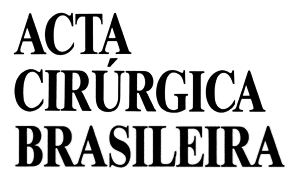Introduction: The growing list of patients awaiting cholecystectomy, together with the great demand for beds and operating rooms at University Hospitals have encouraged the adoption of different solutions. Objective: To evaluate the process of organization and the clinical results of intensive programs of cholecystectomy by videolaparoscopy on an ambulatory surgery basis. Methods: Among the 314 patients with symptomatic cholelithiasis who were waiting for surgery at HCFMRP-USP, 160 were selected for treatment on an ambulatory basis. A multiprofessional team consisting of surgeons, anesthesiologists, nurses and social workers scheduled 4 intensive programs to be performed on weekends according to the availability of the surgical block and of the post-anesthesia recovery room. In a retrospective evaluation, the authors analyzed 79 medical records of patients operated upon in the intensive programs I and II (Group A) and 79 records of the 80 patients operated upon in the intensive programs III and IV (Group B). Statistical analysis was concluded using the Wilcoxon and Fisher's exact tests, with the level of significance of p=0.05. Results: Co-morbidities were recorded for 48 patients of Group A (60.8%) and for 31 of Group B (39.8%), p=0.007. Acute inflammation and scleroatrophy of the gallbladder were observed in 10 patients of group A (12.7%) and in 2 patients of group B (2.6%). The mean duration of surgery was 90 minutes (25-240) for group A and 68.2 minutes (20-180) for group B, p=0.002. There was one conversion in each group (1.3%). Prophylaxis for pain and vomiting was performed in 13 (16.4%) and 2 (2.5%) patients of group A, respectively. In group B, 63 patients (79.7%) received prophylaxis with analgesics and 73 (92.5%) with anti-emetics. Abdominal pain, vomiting and cardiorespiratory symptoms during post-anesthetic recovery involved 34 (43%), 18 (22.6%) and 10 (12.6%) of the patients in group A and 18 (22.8%), 14 (17.7%) and 3 (3.8%) of the patients in group B. The need for an overnight stay was greater in group A: 45 patients (50.7%) with a mean hospital stay of 18.3 hours (2.2-26), while in group B 5 patients stayed overnight and the mean permanence time was 7.8 hours (4-24), p=0.000. Five hospital admissions occurred in group A (6.3%) and 2 in group B (2.5%). Medical re-evaluation during the first week was necessary for 8 patients of group A (10.2%) and resulted in 3 readmissions (3.8%). In group B, 2 patients (2.6%) sought health services but did not require readmission. In group A, 2 patients presented coliperitoneum and 1 was re-operated upon. No death occurred in either group. Conclusion: As experience was gained in these programs, the process of patient selection and the offer of preoperative care were improved, demonstrating that intensive programs of videolaparoscopic cholecystectomy are a possible strategy for the reduction of waiting lists.
Intensive program; Laparoscopy cholecystectomy; waiting list; ambulatory surgery




